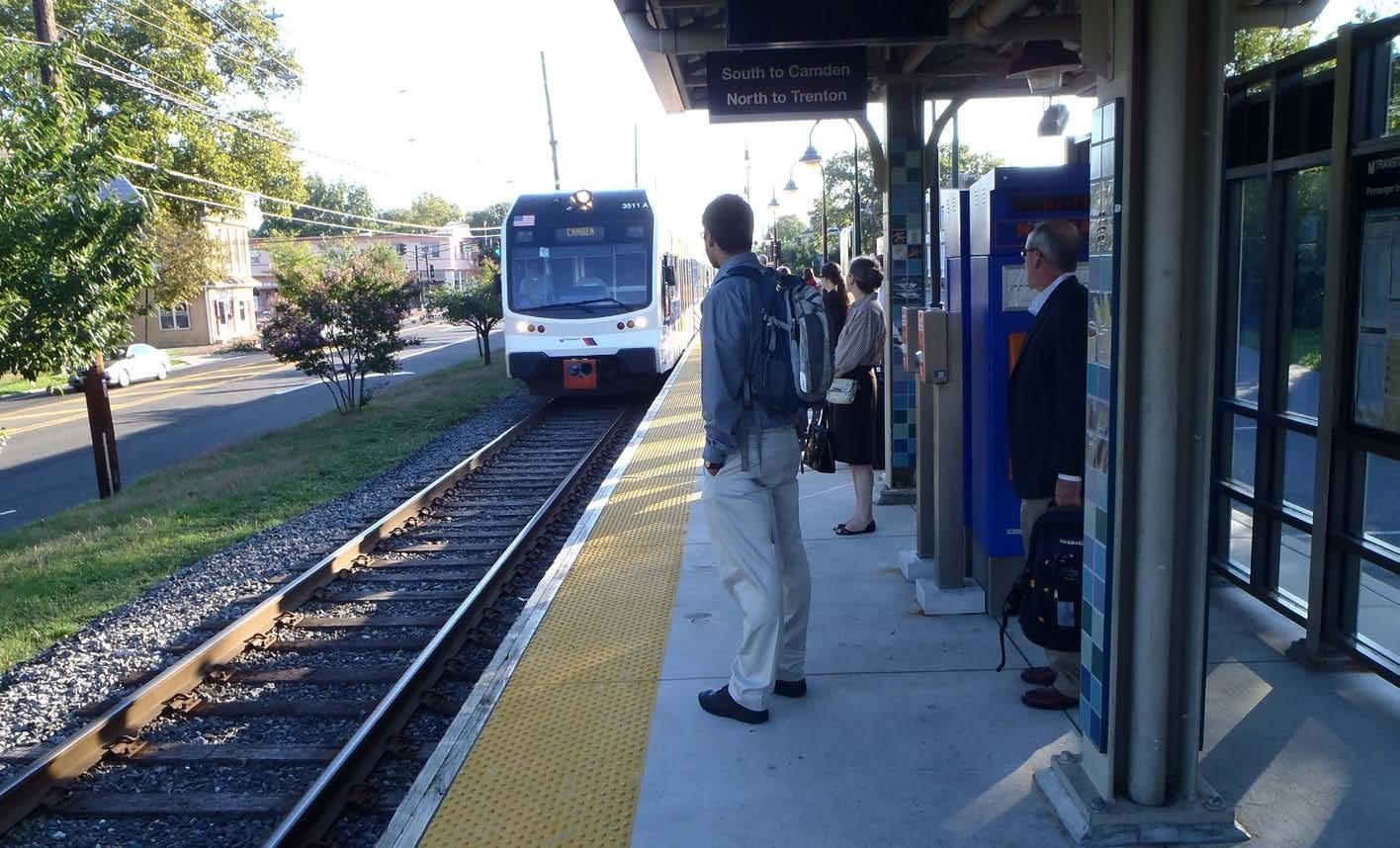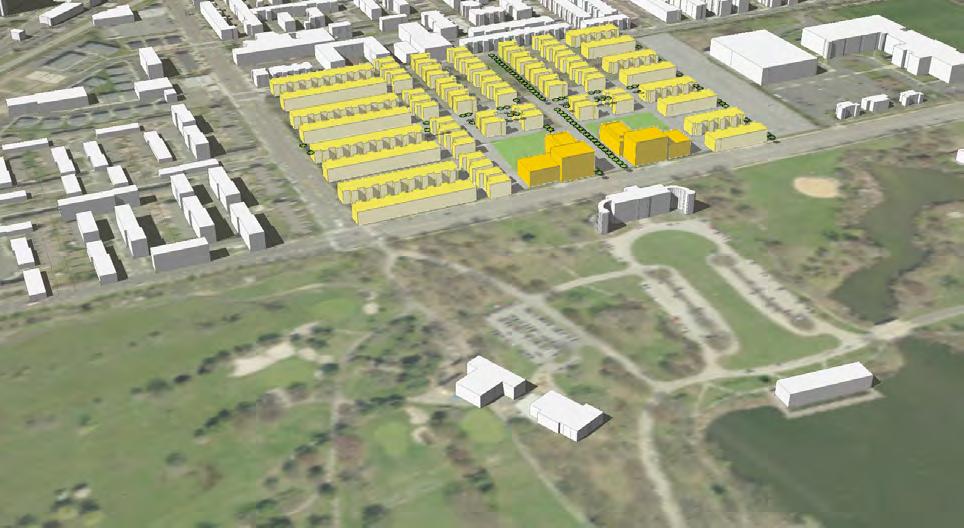Public gets another shot at district comprehensive plans for Lower South and West Park
City planners say they hope more Philadelphians will become interested in the plans that will shape major projects, zoning changes, and potential government funding for neighborhoods in Lower South Philadelphia and near the western portion of Fairmount Park.
The planning commission spent much of 2010 working on these plans, and held several community meetings to gather citizen input. But attendance at the unveiling of the draft plans last November wasn’t as high as what West Park Community Planner Andrew Meloney and Lower South Planner Jennifer Barr would have predicted for documents that will have long-term impact on “How projects get funded and where a new bus route goes,” Barr said.
Perhaps most importantly, Barr said, the plans will determine neighborhoods’ future zoning designations. Whether an area ends up residential, commercial, industrial or mixed use will be based on the documents. There’s more: Zoning classification determines what types of businesses can or can’t be located in an area, how tall buildings can be, how dense residential development can be, and a host of other things.
Meloney surmises that people haven’t realized the power of the district level portions of the Phila2035 Comprehensive Plan because the city hasn’t developed a comprehensive plan since 1960.
“It is hard for people to recognize the importance of it because it is no longer an ingrained part of life in Philadelphia,” Meloney said, noting that many Philadelphians aren’t old enough to even remember the last time it happened.
Barr says one way to realize the impact a comprehensive plan can have on neighborhoods is to look back at what the last one called for.
“I don’t remember the Chinese Wall. Penn Center has always been part of Center City. The Food Distribution Center has always been south of Packer. Society Hill Towers has always existed. But these huge, huge things all came out of the 1960 Master Plan,” she said. “And they all happened within 10 or 15 years.”
On Jan. 31, city residents will get another chance to hear details about the plans for Lower South – which includes the area around the stadiums, the Navy Yard, the port, and nearby residential areas – and West Park – which includes Centennial Park, City Line Avenue, and the relatively large amount of vacant properties contained especially in the residential neighborhoods of East Parkside, West Parkside, and Cathedral Park.
The Philadelphia City Planning Commission will hold a special meeting at which Barr and Meloney will make detailed presentations and the community can comment. The public comment period will remain open for about a month after that. Commissioners are expected to vote on adoption of the final versions of the plans in March.
The current drafts have been written based on staff research and the community input received at public sessions, but they are still being adjusted.
The draft of the Lower South District Plan calls for adding residential and mixed use development at the Nova Care site – the former Naval Hospital – which is now overflow parking for stadium employees, Barr said. “It is now used only 20 or 30 times a year,” she said. There is a strong need for senior housing in the neighborhood, Barr said, and the plan calls for a senior housing component, with commercial development on the ground floor along Pattison. See illustrations from the draft plan, which were presented at a public meeting in November, here.
Eighteenth and 19th streets would be extended through the development, with 19th Street providing a view corridor the whole way to the Swedish History Museum and better access to FDR park for neighborhood residents. The zoning for the area is now “transportation,” but it would be changed to a mix of residential and recreational, Barr said.
Not far away, the Lower South proposal calls for putting more focus on public transportation and extending streets through some of what is now parking at the sports complex and encouraging development, including the already approved Philly Live!, that would make the area a destination even when no games or concerts are happening. Accompanying illustrations show mixed use and residential development in the area.
Sports Services Special Services District Executive Director Shawn Jalosinski declined PlanPhilly’s request for an interview about the plan and how it would impact the special services district. But he said in an email that his organization “continues to actively participate on the steering committee for the 2035 Lower South District Plan” and “continues to actively participate on the steering committee for the 2035 Lower South District Plan.” Jalosinski praised the city for its planning effort, but said SCSSD had no further comment at this time.
In the near term, an existing SEPTA bus route – likely the 2 or the 17 – would be extended from its current end point South of Oregon to the Navy Yard. Longer range plans include extending the Broad Street Subway Line. SEPTA is on board with this proposal, Barr said. Eventually, likely beyond the 2035 endpoint of the city’s new comprehensive plan, there could be a transportation link of some sort between the Navy Yard and South Jersey – something the folks at the Navy Yard are very interested in.
Under the Lower South proposal, the route for this future link would be determined, and nothing that would impede that route – such as plopping a new building on top of its proposed path – would be done, Barr said. In the short term, the district plan calls for updating the master plan for the Navy Yard and the Broad Street Subway extension study. In the short term, it aims to make the Navy Yard a large hub of industrial and commercial uses, and energy research.
In West Park, much of the draft plan’s efforts are focused on the 52nd Street corridor, from Lancaster to Parkside. The draft calls for higher-density mixed use development, Meloney said. “We would like to see some of it stay affordable,” he said. There is also the potential for senior housing. See illustrations and summaries of the draft plan, as presented at a November meeting, here. (Note: While some photo illustrations show Rose Playground closing, it will remain open.)
This development corridor would feature close proximity to Fairmount Park, shopping and transit, Meloney said.
Proposed zoning changes include allowing for higher density near 52nd and Lancaster, and switching Parkside Avenue from industrial to commercial uses.
Just like in Lower South, the West Park plan calls for street extension. In this case, Leidy Avenue would be extended through the industrial park, meeting up with Columbia Avenue at the corner of Columbia and 51st.
This would “upgrade the urban fabric” of the neighborhood, Meloney said. Making it happen would require a road to be built through public property.
The West Park draft plan also calls for new public transportation options, including looking at light rail to link Center City and the cultural attractions of the Centennial District, including Mann Music Center and the Philadelphia Zoo.
The plan also calls for closing some public facilities that are underutilized, Meloney said.
Ford Road Playground is set to close, because it is within a quarter mile of the more popular and better—appointed Conshohocken Avenue/Windmere Park, Meloney said. Ford Road would need “significant upgrades” as it has no community center and the other amenities are mostly broken.
West Mill Creek playground is also set to close. “All three swing sets are broken, and the slide is missing steps in the ladder,” Meloney said. Mayor Nutter funded a new playground a bit north at 52 and Kershaw.
To comment on the Lower South or West Park district plans, attend the special planning commission meeting, or email Barr at jennifer.barr@phila.gov (for Lower South) or Meloney at andrew.meloney@phila.gov (for West Park.)
To learn more about the new city-wide comprehensive plan and the district-level plans, see the planning commission’s Philadelphia2035 website on the topic. The site includes district boundaries and schedules for the development of plans for the remaining districts. Comments can also be made by clicking the “get involved” section of the website and scrolling down the page.
Reach the reporter at kgates@planphilly.com.
WHYY is your source for fact-based, in-depth journalism and information. As a nonprofit organization, we rely on financial support from readers like you. Please give today.





